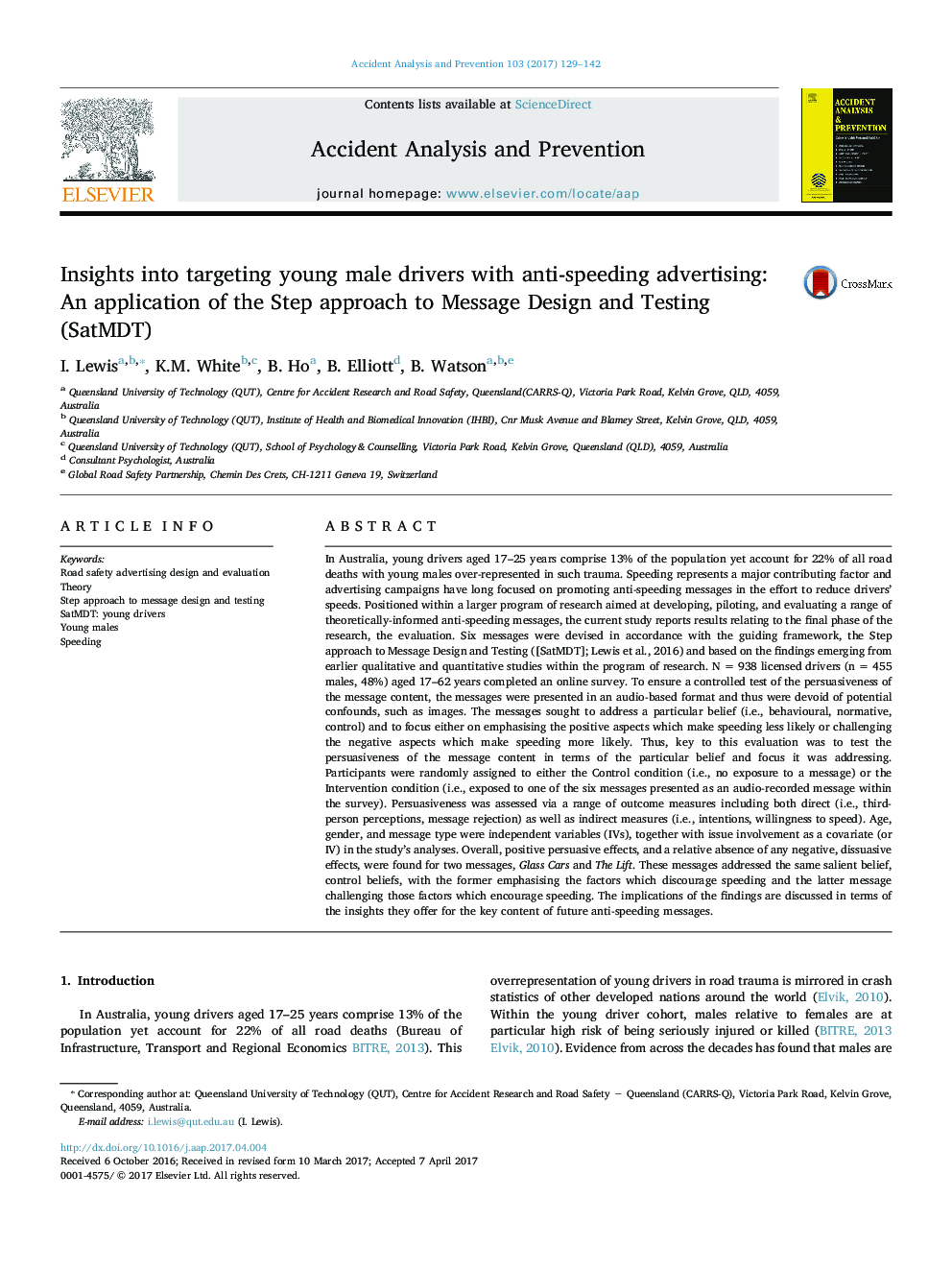| کد مقاله | کد نشریه | سال انتشار | مقاله انگلیسی | نسخه تمام متن |
|---|---|---|---|---|
| 4978754 | 1452896 | 2017 | 14 صفحه PDF | دانلود رایگان |
عنوان انگلیسی مقاله ISI
Insights into targeting young male drivers with anti-speeding advertising: An application of the Step approach to Message Design and Testing (SatMDT)
دانلود مقاله + سفارش ترجمه
دانلود مقاله ISI انگلیسی
رایگان برای ایرانیان
موضوعات مرتبط
مهندسی و علوم پایه
مهندسی شیمی
بهداشت و امنیت شیمی
پیش نمایش صفحه اول مقاله

چکیده انگلیسی
In Australia, young drivers aged 17-25 years comprise 13% of the population yet account for 22% of all road deaths with young males over-represented in such trauma. Speeding represents a major contributing factor and advertising campaigns have long focused on promoting anti-speeding messages in the effort to reduce drivers' speeds. Positioned within a larger program of research aimed at developing, piloting, and evaluating a range of theoretically-informed anti-speeding messages, the current study reports results relating to the final phase of the research, the evaluation. Six messages were devised in accordance with the guiding framework, the Step approach to Message Design and Testing ([SatMDT]; Lewis et al., 2016) and based on the findings emerging from earlier qualitative and quantitative studies within the program of research. N = 938 licensed drivers (n = 455 males, 48%) aged 17-62 years completed an online survey. To ensure a controlled test of the persuasiveness of the message content, the messages were presented in an audio-based format and thus were devoid of potential confounds, such as images. The messages sought to address a particular belief (i.e., behavioural, normative, control) and to focus either on emphasising the positive aspects which make speeding less likely or challenging the negative aspects which make speeding more likely. Thus, key to this evaluation was to test the persuasiveness of the message content in terms of the particular belief and focus it was addressing. Participants were randomly assigned to either the Control condition (i.e., no exposure to a message) or the Intervention condition (i.e., exposed to one of the six messages presented as an audio-recorded message within the survey). Persuasiveness was assessed via a range of outcome measures including both direct (i.e., third-person perceptions, message rejection) as well as indirect measures (i.e., intentions, willingness to speed). Age, gender, and message type were independent variables (IVs), together with issue involvement as a covariate (or IV) in the study's analyses. Overall, positive persuasive effects, and a relative absence of any negative, dissuasive effects, were found for two messages, Glass Cars and The Lift. These messages addressed the same salient belief, control beliefs, with the former emphasising the factors which discourage speeding and the latter message challenging those factors which encourage speeding. The implications of the findings are discussed in terms of the insights they offer for the key content of future anti-speeding messages.
ناشر
Database: Elsevier - ScienceDirect (ساینس دایرکت)
Journal: Accident Analysis & Prevention - Volume 103, June 2017, Pages 129-142
Journal: Accident Analysis & Prevention - Volume 103, June 2017, Pages 129-142
نویسندگان
I. Lewis, K.M. White, B. Ho, B. Elliott, B. Watson,